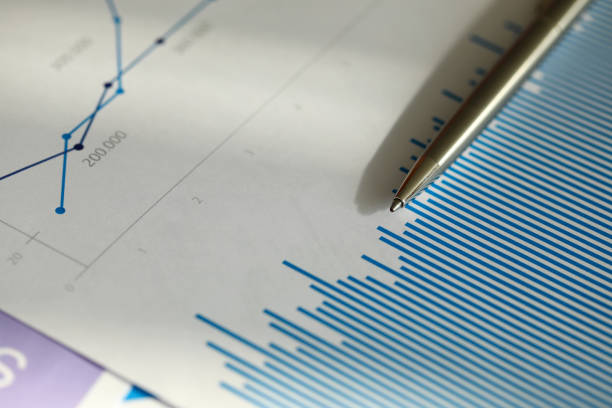A business can increase production and operational effectiveness in a number of ways with the aid of analytics and reporting. While reporting is used to make complex information easier to understand, analytics is the process of making decisions based on the data presented. Let’s talk about reporting vs. analytics.
It is common to equate reporting and analytics. Both collect data as input and display it in graphs, charts, or dashboards, but there are some significant differences between the two. This article will discuss reporting and analytics, highlighting their main distinctions and business relevance.
What Are the Definitions of Reporting and Analytics?
Reporting
The goal of reporting is to take information that already exists and arrange it in a way that is understandable and user-friendly. Reporting does not offer opinion or wisdom. The main focus of data reporting is frequently gathering information from various sources and presenting it succinctly. Reporting should always be accurate, precise, specified, and defined as it targets answering the question of “What is happening?” in day-to-day business operations.
Analytics
By incorporating business knowledge into the interpretation of the data, analytics aims to delve deeper into the data in search of insights that will guide business decisions. Data analytics focuses on “why” something is happening within an organization. By their very nature, analytics are tools for making predictions, recommendations, or decisions about how to proceed.
Reporting Vs Analytics: 3 Key Differences
Purpose
Reports are designed to organize data into understandable information. The goal of analytics is to extract meaning from the data.
Methods
You’ll hear terms like organizing, formatting, building, configuring, consolidating, or summarizing when talking about reports or reporting.
Regarding analytics you will see words about investigating, performing a “deep dive”, questioning, examining, interpreting, comparing, and confirming.
Reports follow what is commonly referred to as a “push approach” which simply means, that when, a report gets made it is designed to push to users. The deliverable on a report is that the data is made usable, regardless of who is writing it: a manager, an employee, or a consultant.
So if reports “push” then you may have guessed that by contrast analytics follow a “pull approach” where analysis is done to “pull” out the answer to whatever business question is being asked. Predictive analytics (answers about what will happen in the future) and prescriptive analytics (ways to optimize the next steps) are the deliverables in the context of analytics.
Value
Every step in your company’s process should ideally be intended to advance your company’s growth, increase your profits, or raise your profile in the market where you compete. We want to be very clear that reporting and analytics are both important to your business model. Analysis, on the other hand, focuses on what might be while reporting focuses on what is. Therefore, in order to advance your business, you must be able to use data to draw conclusions that will strategically align your company. Some businesses struggle with how to gather and organize their data, while others struggle with how to use it strategically.

Importance of Reporting and Analytics
Increase Communication
Enabling information to flow upward, downward, or laterally so that it quickly reaches the intended recipient is possible by putting in place an efficient internal reporting system. Automation reporting methods, which are integrated into some inventory and accounting platforms, take this idea a step further by enabling reports to be emailed to specific stakeholders on a regular basis (possibly daily, weekly, or monthly).
Increase Productivity
Organizations need to be adaptable enough to act quickly on market changes and opportunities if they want to stay productive in today’s fiercely competitive environment. To stand out in the marketplace, a lot of emphases has been placed on catering to the specific needs of targeted consumer groups. Businesses need an inventory and financial reporting system that supports this idea and gives management the necessary information as soon as possible in order to accomplish these goals.
Increase Accuracy
The accuracy and completeness of the information used to make those decisions, as well as a company’s capacity to manage analytics, are key factors that determine how accurate managerial planning, budgeting, and forecasting are overall. The crucial decisions will have been made with the appropriate tools thanks to a reporting system that offers both relevant and accurate information.
Increase Timeliness
After data is gathered, the issue of how to present the data to decision-makers and business owners thoughtfully and perceptively remains. If this is not taken into account, important data about a company’s operations may become entangled in countless spreadsheets and eventually become obsolete or unreliable. In order for managers to quickly and easily analyze the information, it must be presented in an efficient manner. This is why many companies use inventory and accounting software that comes with pre-built report templates, analytics management tools, and the capacity to produce real-time reports that are customized for their industry.
Final Thought
Analytics and reporting differ significantly from one another. While analytics offers useful insights, reporting concentrates on organizing and presenting facts. Both, however, are significant and related. If everyone on your team is on the same page when it comes to what they mean when they discuss analytics or reporting, your implementation plans will stay on track.
Organizations all over the world are using knowledge management systems and solutions, like InsightsHub, to improve data management, shorten the time it takes to get insights and maximize the use of historical data while lowering costs and boosting ROI.





![Hot Desking: Top Pros And Cons [Updated]](https://www.techofficesupplies.com/wp-content/uploads/2022/11/Hot-Desking-Top-Pros-And-Cons-Updated-2-600x400.jpg)